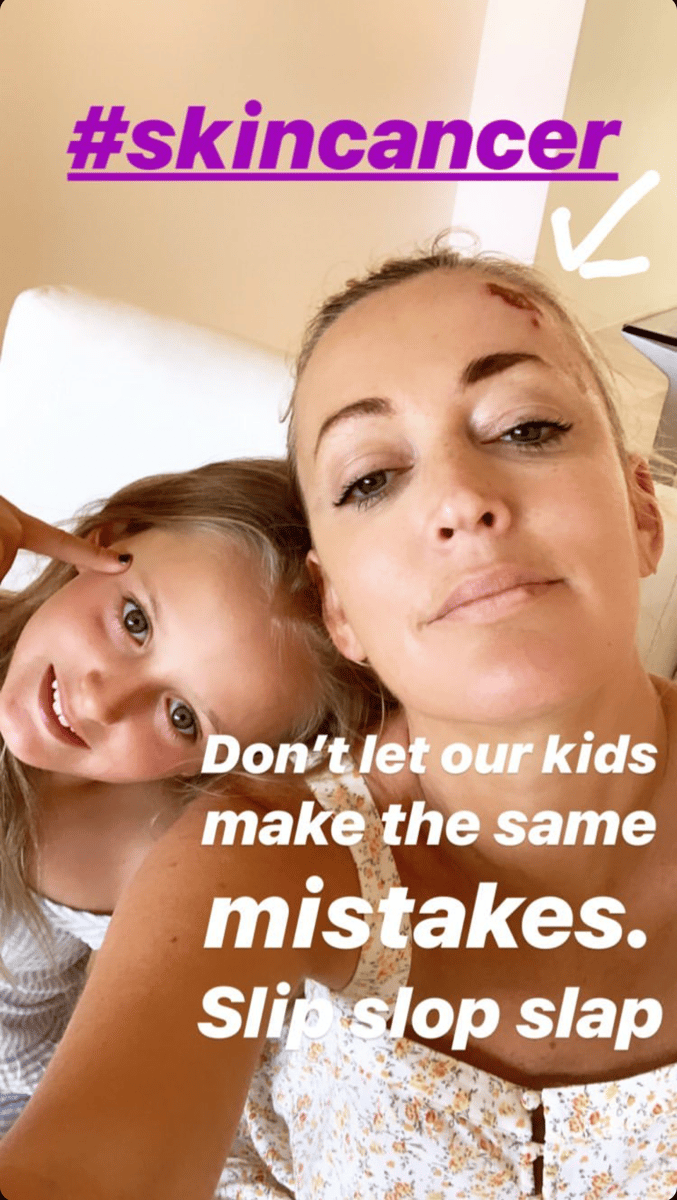
Radio host Jackie O Henderson has shared that a large abrasion on her forehead is from having a skin cancer removed.
The abrasion first caused concern when Jackie O was photographed with it following a holiday in Port Stephens.
Following speculation, the 43-year-old shared an image on Instagram to confirm it was skin cancer.
Posing with her with daughter Kitty, Jackie captioned the photo: “Don’t let our kids make the same mistakes. Slip, slop, slap.”

Back in September, Jackie spoke about getting the cancer removed with KIIS FM co-host Kyle Sandilands.

Top Comments
I recently was diagnosed with a non-melanoma skin cancer also. Was a big surprise given I've been a lot more sun conscious over the past 10 years, was never one to lie there and sunbake, and have olive skin. Shows it's worth getting regular checks, even if you're careful.
People are still struggling to realise the sun is so harsh. I'm seeing pics on social media with people still sun baking, having their kids in just bikinis or shorts in the sun in the middle of the day, so I'm not sure the message is getting through. Whilst not a fan of Jackie O, she does have a high profile and good to see she is using it to promote this message.
Agreed. I just had a malignant melanoma cut out. After the initial mole was taken , i needed another chunk of skin taken to test to see if it had spread. Fortunately not, but such a scary time and a real wake up call. I now point out my scar to anyone who sees it so I can educate people to get their moles checked. We need to be so careful. Cover up people. Bring back the “slip, slop,slap” ads from years ago!
Definitely time for a similar campaign again, the message seems to have been forgotten.